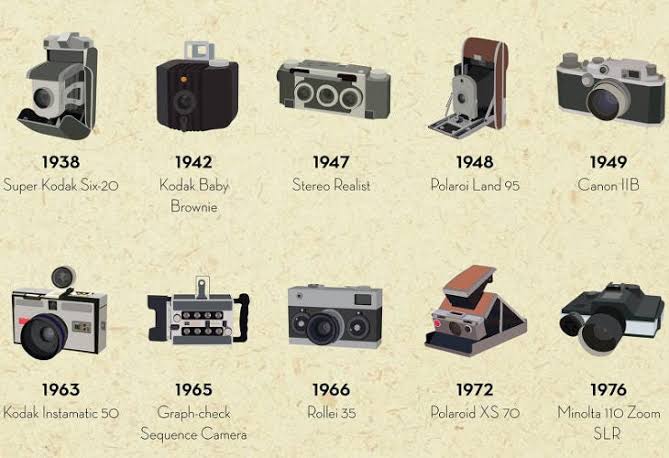Explore the evolution of videography from its analog roots to the digital age. Discover how advancements in technology, including the shift to digital video, the rise of HD and 4K formats, and the impact of smartphones and social media, have transformed video production and consumption. Learn about current trends and future innovations shaping the industry.
The Progression of Videography: From Traditional to Digital
Videography has experienced a changeover, its history shifting from basic approaches to advanced digital methods. This evolution showcases progress, shifts in consumer tastes and the ongoing pursuit of quality and broader accessibility in visual storytelling. Exploring this transformation provides insights, into the industries growth and the tools that have influenced contemporary videography.
Early Analog Videography
The roots of videography date, back to the century when motion was primarily captured using film. The journey of videography started with the creation of motion picture cameras and projectors. These devices utilized reels to record and showcase moving visuals. The underlying technology relied on mechanical and chemical processes where images were captured on a strip coated with sensitive substances.
Among the forms of recording were the 8mm and 16mm film formats. These formats gained popularity for home movies and educational purposes as they provided a cost effective and user friendly means for individuals to record and share video content. However despite their widespread use these early formats had drawbacks, in image quality, user friendliness and the necessity for developing film.
The advent of the cassette recorder (VCR) in the 1970s was a turning point, for videography. With the VCR people could record and watch TV shows and home videos using tape. This innovation made videography more available to everyone and led to the popularity of video in both households and businesses. During this time the VHS (Video Home System) and Betamax formats competed for dominance. Ultimately VHS emerged as the standard due to its recording duration and affordability.
Transition to Digital Videography
The shift, from analog to digital videography started in the 1990s and early 2000s. This change was fueled by advancements in technology and the demand for video recording and editing. Digital videography utilizes processes to capture, store and manipulate video data offering advantages over analog methods such as enhanced quality, increased storage capacity and more versatile editing capabilities.
A significant breakthrough in digital videography was the creation of video cameras. Unlike their counterparts digital video cameras employ sensors to capture images and transform them into data. This transition enabled resolution improved color accuracy and greater control over video production elements. Initially digital video cameras were priced and aimed at users. However as time progressed the technology became more cost effective and accessible to enthusiasts and hobbyists alike.
The emergence of video formats like DV (Digital Video) and HDV (High Definition Video) brought about a change in the industry. These formats offered resolution and superior image quality compared to tapes while also providing the convenience of storage and playback. Additionally the capability to edit and modify videos on computers revolutionized the production process allowing creators to produce high quality content without the need for costly equipment and facilities.
The Rise of High Definition and 4K Video
As technology progressed the demand for video quality and immersive experiences spurred the rise of formats like high definition (HD) and ultra high definition (4K). HD video, with its resolutions of 720p and 1080p, set a new benchmark for both consumer and professional use delivering image quality compared to standard definition (SD) formats. The widespread adoption of HD TVs, computer screens and online video platforms further fueled the shift towards HD content.
The introduction of 4K video boasting a resolution of 3840 x 2160 pixels marked a significant advancement in quality. 4K video offers four times the clarity of 1080p HD, showcasing details and sharpness. This technology has gained traction across fields such as filmmaking, television broadcasting and streaming platforms. With the availability of 4K cameras and editing tools creators find it easier to produce and share top notch video content.
The Impact of Smartphones and Social Media
The advent of smartphones and social media has significantly influenced videography making it accessible to everyone for content creation and sharing. Today's smartphones come equipped with cameras that can shoot high definition and even 4K videos. This advancement allows people to easily capture and distribute video content like never before. Leading to the rise of user generated material and video focused platforms such as YouTube, Instagram and TikTok.
Social media has also changed the way video content is consumed and spread. Websites like YouTube and Instagram provide creators with a reach and tools to monetize their work. Meanwhile TikTok has gained popularity for its short form videos through features. The convenience of sharing and discovering content on media has given rise to trends, challenges and viral sensations, reshaping the world of videography.
Future Trends in Videography
The field of videography is constantly evolving, with new technologies and trends shaping the landscape. Virtual reality (VR) and augmented reality (AR) are playing roles in video production by offering innovative ways to create interactive and immersive experiences. Moreover advancements in intelligence (AI) and machine learning are being utilized in video editing processes improving automation and efficiency in tasks like stabilizing videos, correcting colors and recognizing objects.
Furthermore the increasing popularity of degree videos and live streaming is broadening the scope for creating and consuming video content. These advancements offer viewers experiences allowing them to explore videos from perspectives and in real time.
To sum up the progression of videography, from analog to digital showcases a shift propelled by progress and evolving consumer preferences. The shift from traditional film to video the emergence of high definition and 4K formats along with the influence of smartphones and social media have all contributed to the industrys evolution. With ongoing technological advancements the future of videography holds thrilling innovations and possibilities for both creators and viewers.
